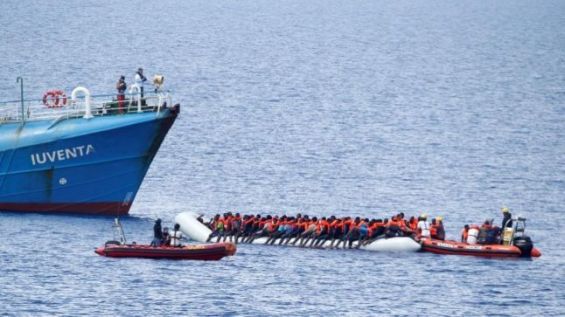The number of migrants entering Spain, illegally, through the Western Mediterranean route has significantly increased in 2017, said the European Border and Coast Guard Agency (Frontex) in a report made public on Tuesday. According to the agency of the European Union headquartered in Warsaw, Poland, although the detections of illegal border crossing at the EU’s external borders dropped in general, moving from 511 046 in 2016 to 204 718 in 2017, the Western Mediterranean route, located in Northern Morocco, remains heavily used by the migrants wishing to step on the European soil.
Based on the statistics provided by the agency, 23 143 migrants have used the route in 2017, compared to 2016 when only 9 990 did the same. Morocco, however, leads the list that includes migrants coming from both Algeria and Côte d’Ivoire. Giving more details, 4 809 Moroccan migrants went through the Western Mediterranean route while only 4 219 and 3345 in Algeria and Côte d’Ivoire, respectively did so.
This trend dates back to 2014, according to Frontex, the number of migrants entering Spain through the Mediterranean route in Morocco has increased through the years moving from 7 243 in 2014, 7 004 in 2015, 9 990 in 2016 to 23 143 in 2017.
Blaming «domestic issues» in Morocco
Surprisingly in Morocco the influx almost doubled last year, jumping from 722 Moroccans in 2016 to 4 809 in 2017. The authors of the report had an explanation for this unexpected increase :
«Domestic issues in Morocco, the main transit country for migrants heading to Spain, created an opening for more departures from Morocco’s western coast in particular, which starting from the second quarter of the year led to the use of high-capacity boats able to transport large numbers of migrants».
The report is clearly referring to the social unrest that Northern Morocco has been witnessing since October 2016. Linking migration to the Hirak popular movement in Al Hoceima and recently in Jerada has been done by the same source in January.
Based on the data provided by Frontex, nearly 13,600 migrants crossed into Spain using the strait of Gibraltar route during the first eight months of 2017. This statistics were relayed at the time by the Guardian, a British newspaper, which insisted that unemployment and the security approach adopted by the authorities in the city of Al Hoceima, have pushed some Riffians to head north and cross the sea for Spain.
The same hypothesis brought by the Guardian has been supported by Cadena ser, a Spanish radio station.
In an article published on Tuesday, 31st of October, Cadena ser said that the majority of migrants illegally crossing the Mediterranean are «minors coming from the north of Morocco». The same account was confirmed by «Caminando Fronteras» (Walking Borders), an NGO that supports migrants in the region.
According to Helena Maleno, the spokesperson for the association «this change may be due to the crisis in the north of the country».
Moreover, Cadena ser argued that the political situation in Al Hoceima might be behind the migration influx in Europe and Spain in particular. «Moroccan migrants on the Spanish coasts are out-numbering Sub-Saharans», said the same source quoting Maleno who believes that the situation remains worrying.




 chargement...
chargement...















